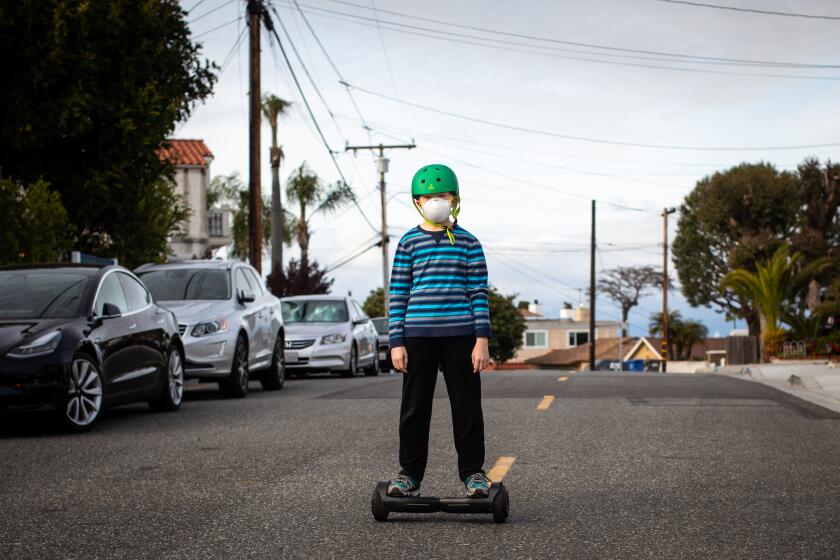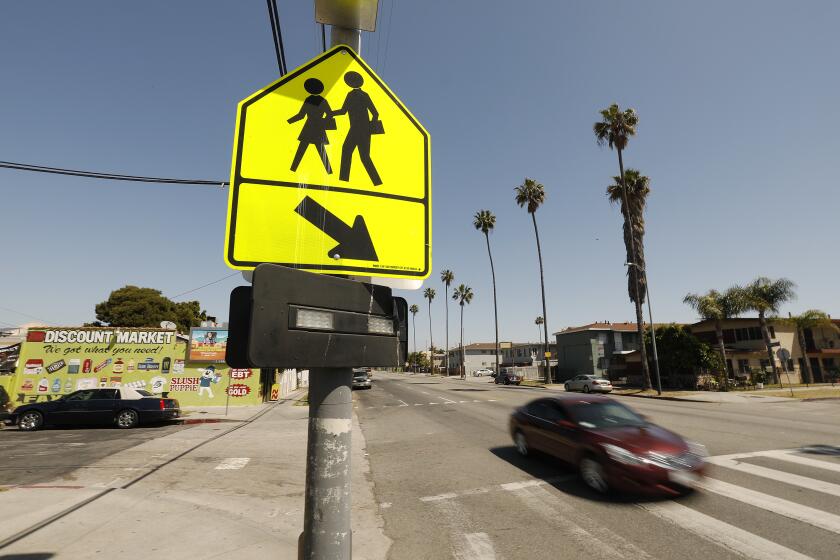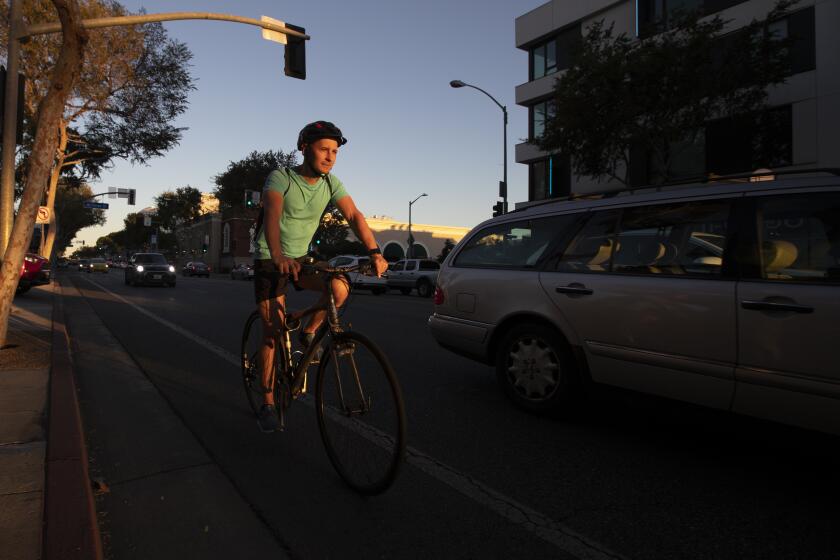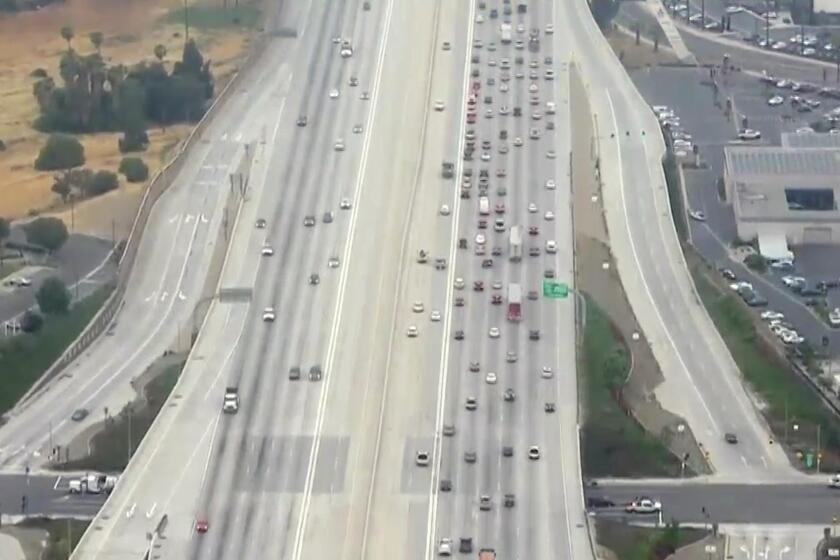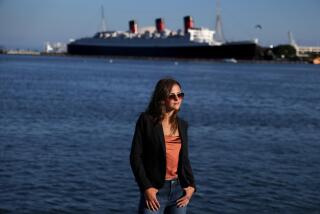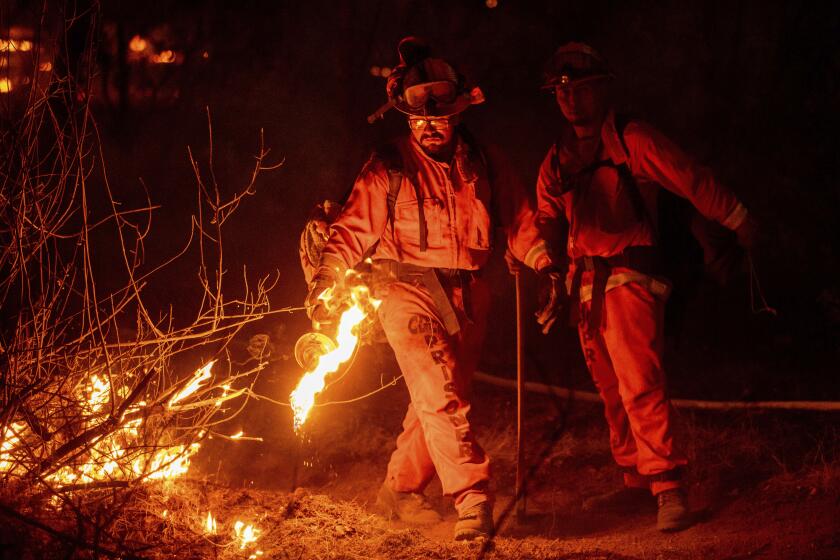Opinion: Ban cars from streets near schools. Children shouldn’t have to risk their lives every morning
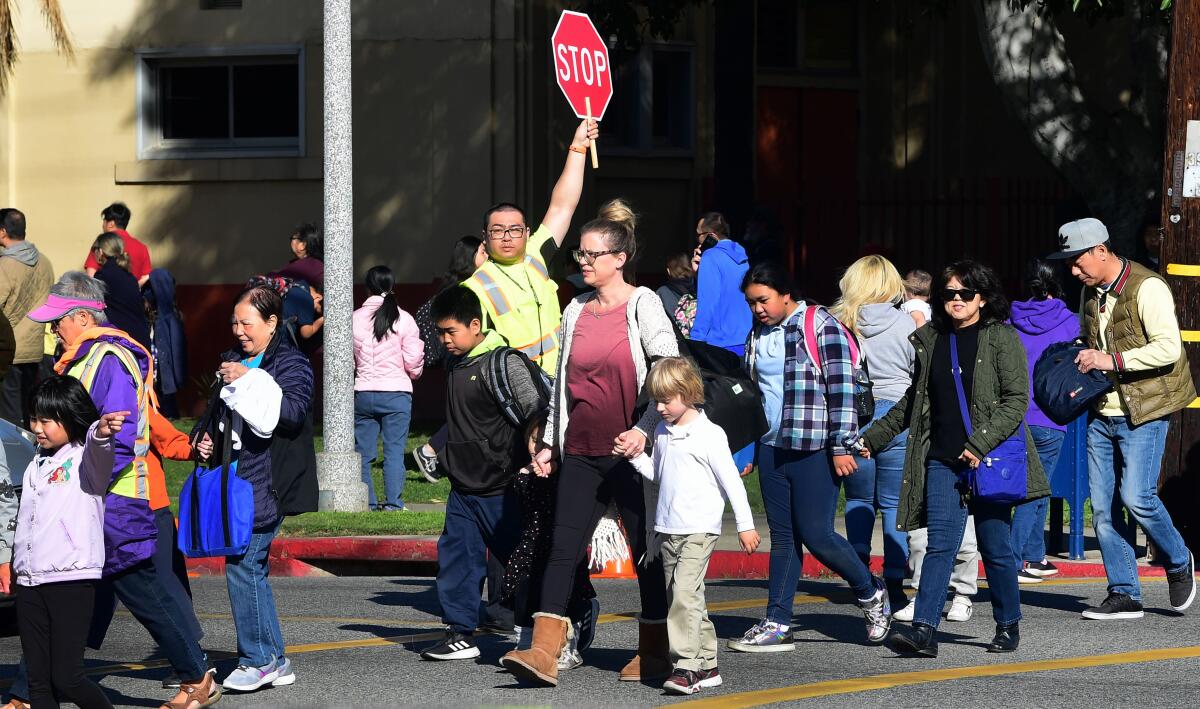
As kids go back to school this week in L.A., it’s hard to not think about some of the tragedies that have transpired around our schools — and about how we could prevent the next ones.
In April, a little before 8 a.m., a pickup truck plowed into a mother and 6-year-old girl in the crosswalk in front of Hancock Park Elementary School in the Mid-Wilshire area, killing the woman and injuring the child.
The next day, a 14-year-old student was hit while walking to Berendo Middle School near Downtown L.A.
Vehicle sizes have ballooned in recent decades, and now children would be unsafe on bikes. History shows us a better approach.
In March 2020, 13-year-old Abraham Trejos was waiting to cross the street to go to school in South Los Angeles. When the light turned green, he started crossing. At the same time, a 43-year-old woman made a left and hit Abraham; he died at the scene.
As an activist dedicated to preventing traffic violence and other harms from our car-dominated culture, I know tragedies like these are both sadly familiar and completely preventable.
The Los Angeles Department of Transportation is so chronically understaffed that safety improvements long planned for Hancock Park Elementary, including a curb extension, were still not done despite being planned for more than a year. It’s possible these upgrades could have changed the outcome that day in April, and lives would not have been shattered.
Legislation in Sacramento would allow pilot programs in six cities to issue automated tickets. It’s not a moneymaking scheme; it’s about making streets safe.
As a city, we need to do some soul searching. How much is it worth to provide maximum convenience to drivers if we measure the cost in kids’ lives? What kinds of compromises are we willing to keep making to have the “freedom” provided by cars? What are we willing to do to make sure preventable deaths never happen again?
In the late 1980s, Italy started experimenting with blocking cars completely from streets by schools during school hours. In 2012, the United Kingdom started doing the same, and schools in Paris joined in 2019. The U.K. now has more than 700 such “school streets,” France 215, Belgium 170, Spain 150. In the United States — which is roughly the same size as the entire European Union — we have a total of 110.
There’s an unavoidable inconvenience to drivers when adding sufficient bike and bus lanes, but the benefits for all of us are far greater.
In Los Angeles, nearly all schools are optimized for parents to drop off and pick up kids via cars, with car valet lines snaking out into adjacent streets and parent volunteers in vests trying to keep the line moving. Our thinking has been about enhancing the convenience of moving children by car, versus protecting the children themselves. This city does not have a single car-free street in front of a school.
Car crashes are a leading cause of death of children in L.A., at a rate of 16 deaths per 100,000 kids as of 2019. As adults opt to purchase larger and larger vehicles, this has come at a huge cost to both our kids’ safety and their freedom. Walking to school should not be deadly.
How do we make sure no child (or parent) ever is hurt by a driver while on their way to school again? While the City Council’s school-specific speed hump program and lowering speed limits around schools is a good start, it’s not nearly enough — drivers don’t change habits based on signage, they change habits based on changes to the built environment.
Too many new buildings have too many parking places, by law. The city should reduce the amount of land devoted to cars, so more housing can be built.
We should immediately put resources toward banning cars from the streets where kids enter and exit schools, at least during school hours and ideally permanently. Yes, that may mean parents who drive their kids to school would need to take more time because they’ll have to drop off farther from school or park somewhere and walk their kids the rest of the way, but the safety benefits are worth it.
We should also make every street within a mile of a school a “slow street,” with traffic-calming infrastructure built in. This could help encourage some parents to leave cars entirely out of their kids’ commute, by walking or biking to school on what would be safer streets.
The expansion of highways will do far more harm than the expansion of mass transit will avert.
Kids don’t just show up at school; they have to get there. We should prioritize walking and biking ways for them to do so. It would also be great to see an effort at the state level to allow transportation funding for schools to include “bike buses” — adult-led parades of students heading to and from school by bike. This was recently passed in Oregon.
There are always those who oppose things like adding bike lanes and safety improvements to streets because they don’t want to give up space to drive or park. I would ask them this: What kind of city do you want to create for our children? Do you want them to have to use a car to get around all the time? Do you want them breathing in polluted air? Do you want to live in a city where a pedestrian is killed once every three days?
It’s not just up to city, county and state officials. Average residents can make a huge difference for the better. The next time a road safety project is proposed, support it, even if it means your commute might take a couple of minutes longer. Our children’s lives are worth it.
Michael Schneider is the founder of Streets for All.
More to Read
A cure for the common opinion
Get thought-provoking perspectives with our weekly newsletter.
You may occasionally receive promotional content from the Los Angeles Times.
